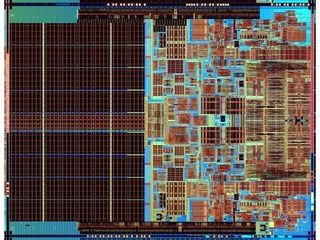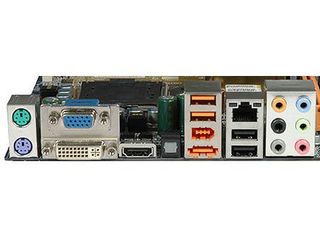Tom's Energy Efficiency Guide
At the Chip/Technology Level
Selecting the right components is important in building an energy efficient machine. If you go for an old Pentium D instead of the current Core 2 Duo processor, you will get two processing cores in both cases and even higher clock speeds with the Pentium D. The old Pentium generation is based on the NetBurst architecture, though, which is considerably slower than the Core 2 family (including the Pentium Dual Core, which is a stripped down version). Despite its deficient performance, the Pentium D will still consume much more power than a Core 2 processor under all possible conditions. Clearly, selecting the right technology is very important.

Intel’s Core 2 Duo is currently one of the best processor choices when it comes to energy efficiency. Although other CPUs are more efficient, these models deliver high performance at relatively low power consumption levels.
For office machines, it’s typically best to go for a modern processor that utilizes the latest manufacturing process, which typically ensures minimum power consumption and up-to-date features and performance levels. Also important is a motherboard with a current chipset featuring an integrated graphics unit. Although these graphics engines are inadequate for serious gaming, they represent the cheapest and most energy efficient type of display interface. Remember that you can always add a fully featured graphics card later on if it’s required.

Motherboards such as this G33 solution by Gigabyte often have an integrated graphics unit. If you find either the blue, 15-pin D-SUB connector (analog graphics) or the white 28-pin DVI connector (digital graphics for TFT displays) then you can be sure that the PC in front of you has integrated graphics. It won’t deliver 3D performance capable of powering graphics-intensive games, but the system will certainly be somewhat power efficient for office tasks.
Make sure you find a motherboard that is either based on a small number of voltage regulator phases in order to save power, or one that dynamically switches phases on and off as required. More phases for the voltage regulators on a motherboard mean high and stable power output for high-end processors, but multiple phases also decrease energy efficiency. The Taiwanese motherboard industry is currently debating various approaches to switching voltage regulator phases on and off (in chunks, or one by one).
In this context it makes sense to mention the PCI Express 2.0 interface, which is not only twice as fast as PCI Express 1.x, but it can also contribute to saving power. PCIe 2.0 is compatible with PCIe 1.x hardware, and it can dynamically enable or disable PCI Express lanes, which means that a PCIe 2.0 graphics card that is running idle on a PCIe 2.0 compliant motherboard will require less interface power than a PCIe 1.x device. This, however, depends on proper implementation of the standard.

A large number of voltage regulators, like this 8-phase device on an Asus Striker II Extreme, means easy support for high-end processors that require a lot of power in a reliable manner. However, many phases also reduce energy efficiency, unless the motherboard design is capable of switching phases on and off dynamically to save power at low loads and provide stable power supply at high loads.
Stay on the Cutting Edge
Join the experts who read Tom's Hardware for the inside track on enthusiast PC tech news — and have for over 25 years. We'll send breaking news and in-depth reviews of CPUs, GPUs, AI, maker hardware and more straight to your inbox.
Other components—such as the hard drive, optical drives, add-in cards and the memory—do not alter the total power consumption very much, but the clock speeds of all relevant components do. A high-speed processor with large caches will always require more power than a mid-range version, which almost always provides better energy efficiency. Hard drives with large capacities are based on multiple magnetic platters and hence consume more power than those with fewer platters. Don’t forget the power supply either, as its energy efficiency (which is rated in percent) defines the total power consumption of the entire system. If you go for very efficient components but a lousy PSU, the power supply will negate all your power saving efforts.
Current page: At the Chip/Technology Level
Prev Page Ways to Save Power Next Page On a Component LevelMost Popular

